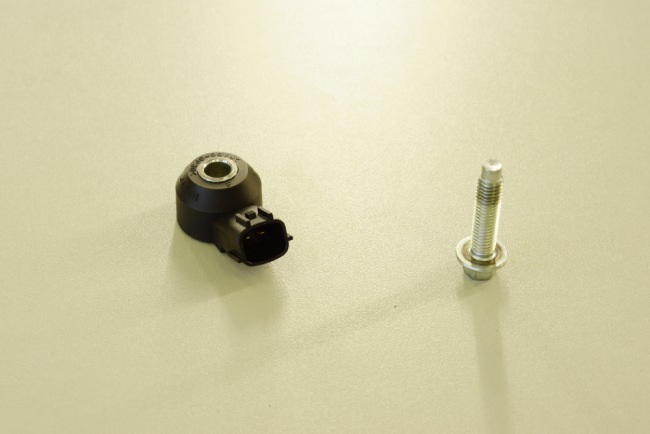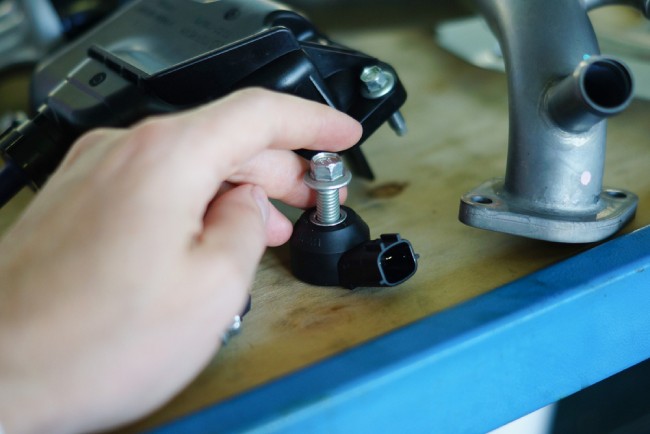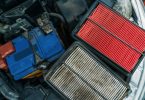Turning into high-speed traffic can be intense, but it can be dangerous when the car slows down and traffic is on your tail. The knocking noise from the engine can be as unnerving as the car bogging down until it begins to speed up again.
While most knocks caught early won’t damage the engine, if the issue resulting in the knock is not fixed, it can cause severe engine damage.
Here we learn the signs of a bad knock sensor, what causes engine knock, what needs to be done to fix the causes, and where the knock sensor is located.
Defining knock
The perfect air/fuel ratio is needed to create combustion in your cylinders. The timing has to be perfect for this to happen, so the spark from the plugs can set off the series of sparks in the cylinders.
Fuel that burns unevenly combusts at the wrong time, and a knock results. While you can’t see a knock, it is heard as a knocking or pinging sound.
Knock signals that something is wrong and could cause damage to the walls in the engine’s cylinders and pistons. Untreated knock can severely damage a vehicle’s engine. The knock sensor is a fail-safe to prevent these ignitions before they start.
Knock is sometimes thought to be pre-ignition, but they are different in the timing when they occur. Knock is concurrent with spark plug ignition, but pre-ignition generally occurs when the pistons rise before the spark plugs ignite
Enter the knock sensor

Getting the spark plugs to send the spark while the piston is in a higher position decreases the intensity of the ignition. But the car slows down until the vehicle’s timing is restored. The delay in the timing is a mechanism to protect the engine.
You can feel this as you turn at a higher speed, and the car gets really slow and then suddenly picks up.
Your knock sensor’s job is to send a cue to the powertrain (electronic control module) so the ignition is late and the combustion doesn’t happen. This is done as it senses the vibrations as the shocks start.
Once the electronic control module knows the problem, it decides if the ignition should be stopped. If the discharge should occur, it will not be severe enough to cause engine damage.
To locate the knock sensor, look on the outside wall of the engine in most cars, but in some vehicles, you have to remove the intake manifold to get to it.
Indications Your Vehicle Has Engine Knock

There are several warnings of engine knock. Knowing what they are will help you fix them and eliminate the engine knock before damage to the engine occurs.
Dashboard light warning
The dash light coming on is the most visible sign of any car issue. Any time a light is on, the code should be read and the issue fixed. If the dash light is on, the knock sensor isn’t working correctly, so the signal to the ECM is not getting sent.
Fixing the issue before engine damage occurs is the best option. A coding tool can be used to read the code so you can fix the problem.
Thumps, knocks, and pings
Another sign you will notice right away is odd sounds from the engine. People describe them as pinging, knocking, and thumping noises that start out soft and get louder as the problem worsens.
The sounds are the small combustions in the engine that the ECM does not detour as the knock sensor is not sending out the alerts. The sounds warn you to get the engine looked at sooner than later.
Change in fuel economy
When there is a change in how the engine runs, there is a change in fuel consumption. It will seem insignificant, maybe 1-2 fewer miles to the gallon, but it will be consistent and will not improve until the knock sensor is replaced.
Loss of acceleration
As the engine tries to protect itself from the extra combustion, you will feel a loss of power as you accelerate. It feels like the engine is bogging. It will be accompanied by thumps or pinging, and you won’t be able to deny there is a problem.
Decrease in the engine’s power
Torque and engine speed can get your car from zero to seventy in a few seconds. It gives you the sense of being pushed back in your seat as you take off at high speed. While most of us don’t take off that fast, you will feel the loss of engine power as you accelerate.
Your vehicle’s brainbox returns to the vehicle’s default setting to protect the engine from increasing pressure that will cause unwanted combustion. Do not ignore this sign. It is a major sign that the knock sensor is defective.
What’s Causing the Knock Sensor to Be Faulty?
Poor ECU settings
The electronic control unit can be poorly programmed in two ways: the setting is too lean and adds more fuel over time, or the spark plugs ignites before they should (advanced timing).
If the manufacturer has set it leaner to help with emissions, it may just be that it is set leaner than needed. In this case, there is usually a recall or an announcement by the manufacturer to fix the calibration issues.
Unfortunately, there is no DIY fix here and the ECU has to be recalibrated by the manufacturer, car dealership, or repair shop.
Advanced timing will create combustion issues. You can do this yourself if you know how to change your vehicle’s timing. It is best left to a professional if you have never done it.
Using the wrong octane gas
Manufacturers suggest the car’s octane for many reasons, one being that engine knock starts by using a lower octane than recommended.
While it may save you a few pennies at the pump, compression ignition is more likely to happen with improper octane. Using the right octane or a higher one can eliminate this problem.
Fouled spark plugs
Spark plugs are essential to starting the engine. If there is no spark or the spark is delayed, you will have trouble getting the vehicle to start, or it won’t start at all. Well-maintained spark plugs last longer, but spark plugs are only good up to 30,000 miles.
Fouled spark plugs decrease your fuel economy and reduce engine power. Spark plugs are not expensive to replace and can be done by a DIYer.
This video will talk you through replacing your spark plugs.
Build-up of carbon
Despite use fuel manufacturers adding anti-carbon cleaners to their fuel, you can still get some carbon build-up.
Carbon takes up the air and fuel space, escalates compression, and causes damage to the piston, valve, and cylinder walls. It can also cause engine overheating and poor fuel consumption.
Removing the carbon build-up will fix the problem. There are additives you can add to fuel and several ways to remove the build-up that your local mechanic can do.
Extreme temperature – heat
During periods when the weather is extremely hot, there is a possibility that gas combustion temperature could increase due to the decrease in air density through the intake. Most vehicles’ ECU should eliminate this issue, but there will be a knock on the off chance it doesn’t.
Defective knock sensor
A bad knock sensor won’t send the signals to the ECU, so your car’s computer will not stop the extra ignitions. Your engine will start to knock.
The only way to fix the knock sensor is to replace it. You can do this yourself for the cost of a new knock sensor. Depending on your vehicle, it will cost between $60 to $190. But doing it yourself will save you labor costs.
You can have it done by a mechanic for between $110 and $500, depending on the price of the knock sensor and the mechanic’s labor charge.










Leave a Comment